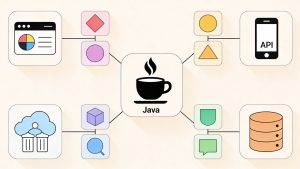A practical guide to constructing a fullstack blogging platform showcases how developers can combine Next.js, Prisma ORM, Postgres, and robust deployment to Vercel for an efficient and scalable solution. This approach leverages seamless authentication with GitHub, dynamic server-side rendering, and powerful database management to streamline content workflows.
Essential Prerequisites
Before starting, developers should have Node.js installed, along with active accounts on Vercel and GitHub. These tools are vital for setting up the required database, authentication, and deployment infrastructure.
Project Initialization and Setup
Kickstarting the development begins with creating a new Next.js application using a pre-built starter template. The standard workflow involves using the command-line interface to generate the boilerplate, followed by launching the development server for local testing and initial code configuration.
PostgreSQL Database Configuration
A free Postgres database hosted on Vercel provides scalability and cloud-native convenience. By deploying the project to Vercel and using its storage integrations, developers can efficiently add and manage environment variables for streamlined local and cloud development.
Integrating Prisma ORM and Defining the Schema
Prisma is introduced to the stack as a next-generation ORM, simplifying database migrations and queries. Developers configure Prisma by creating schema models for “User” and “Post,” mapping fields and relationships to optimize data management for blogging features. Using Prisma CLI commands, the schema is synced with the database and dummy data can be added via the Prisma Studio GUI.
Generating Prisma Client for Database Access
The Prisma Client package is installed and instantiated in the project to facilitate direct, type-safe access to database tables. The client is configured to work with both development and production environments, ensuring efficient connections across all workflows.
Refactoring Views to Utilize Live Data
Initially hardcoded, feed and post detail views are quickly modified to source data directly from the database using Prisma queries. Static and server-side data fetching approaches are demonstrated, enabling responsive, dynamic content delivery across pages.
Adding GitHub OAuth Authentication with NextAuth.js
Security and personalization are enhanced by incorporating GitHub OAuth through NextAuth.js. New schema tables are created for session management, user records, and verification tokens. Developers register OAuth credentials on GitHub and configure environment variables for smooth login experiences.
Implementing the Login and Session Functionality
With NextAuth.js configured, the user interface is updated to display login/logout buttons and restrict access to drafts and publishing features for authenticated users only. Session persistence is handled by wrapping the root app component with a session provider.
Enabling Post Creation Through the UI
A new route for post creation is added, featuring a form for title and content submission. The form communicates with a custom API route to store new post data in the database, triggering redirects to draft views upon successful creation.
Viewing and Managing Drafts
The application includes a “Drafts” page, where authenticated users can review their unpublished posts. Server-side rendering ensures up-to-date information for each logged-in user, enhancing security and performance.
Publishing and Deleting Posts
Custom backend API routes allow users to publish or delete drafts. These functionalities are exposed via intuitive front-end buttons, making blog management seamless. Published posts are automatically updated in the feed for public viewing, while deletion removes unwanted drafts from the database.
Seamless Deployment to Vercel
For final deployment, the guide walks through creating a unique GitHub OAuth app, preparing the repository, and configuring all necessary environment variables. Linking the Vercel database ensures uninterrupted connections for production use. Once deployed, the application offers a scalable, secure blogging experience on the web.
Read more such articles from our Newsletter here.



